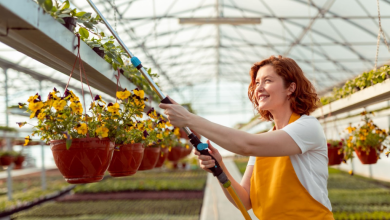How to Design a Yard Around Native Plants

Landscaping around native plants is a great way to make your yard more-beautiful and healthy for people and wildlife. Creating a garden with native perennials, shrubs, trees and ground covers isn’t as complicated as you might think.
The key is to understand your landscape and the needs of the native plants you choose to grow there. By following a few simple tips, you can design your own beautiful natural garden with native flowers, shrubs and trees!
Look at the Landforms
When you design your yard around native plants, it is important to look at the landforms in your area. They will influence how the plants grow and what they need to thrive.
Mountain ranges, lakes, rivers, oceans and mid-ocean ridges are all examples of significant landforms that impact the ecosystem, climate and weather of the region.
Mountains, hills, plateaus and plains are the major types of landforms recognized by most people. However, there are also many minor landforms that are not always as well-known.
When designing a yard around native plants, you should look for a variety of species that are adapted to the local soil, light and water conditions. This will help create a plant palette that will thrive and return year after year, saving you money in the long run-on water and maintenance costs.
Think About Your Soil
A yard around native plants can look great, but it also helps protect the environment. Not only are these plants low maintenance, but they also reduce the need for fertilizers and pesticides.
Moreover, they create wildlife habitat that helps animals and insects. In addition, their roots break up heavy clay soils, which allows water to penetrate the entire soil profile.
Soil can be a tricky thing to work with, so be sure to think about it before you design your yard around native plants. If you live in a part of the country with heavy clay or poor soil, consider planting trees or shrubs that have deep roots.
Look at the Sunlight
When it comes to designing a yard around native plants, Chuck’s Landscaping recommends sunlight is the most important factor. Different plants require different amounts of sun. Some, like squash and many vegetables, need six hours or more of direct sunlight to grow well.
However, some shade-tolerant natives do quite well in surprisingly dim conditions. Before planting, map out your yard’s solar patterns.
Once you’ve done this, use a simple sun map to help you choose the right plants for your site. You can sketch it out by hand or use a garden planner to get an even better idea of where the sun hits your yard.
Whether you’re a beginner or an experienced gardener, it’s always a good idea to look for plants that are native to your area. This is because plants that have a long ancestral history in your local environment have adapted to the growing conditions (soil, rainfall, temperature) of your region. They’re also likely to need less care and water than non-native species.
Look at the Water
Water is a good place to start when thinking about how to design your yard around native plants. These landscape marvels not only help conserve water but also provide habitat for wildlife, make your home more eco-friendly and increase its resale value.
The best way to do this is by choosing a landscape design that includes plants that are adapted to your local climate, soil and weather conditions. These are the plants that work best in your particular area and don’t require a lot of maintenance or water. It’s important to remember that a water-wise design is not just about the right plant for the right place, it also involves using a variety of smart irrigation and other low-water landscaping techniques such as rain gardens and bioswales. The best part of these is that they can be inexpensive or free. This is especially true if you live in an area with a high drought index like Texas.




